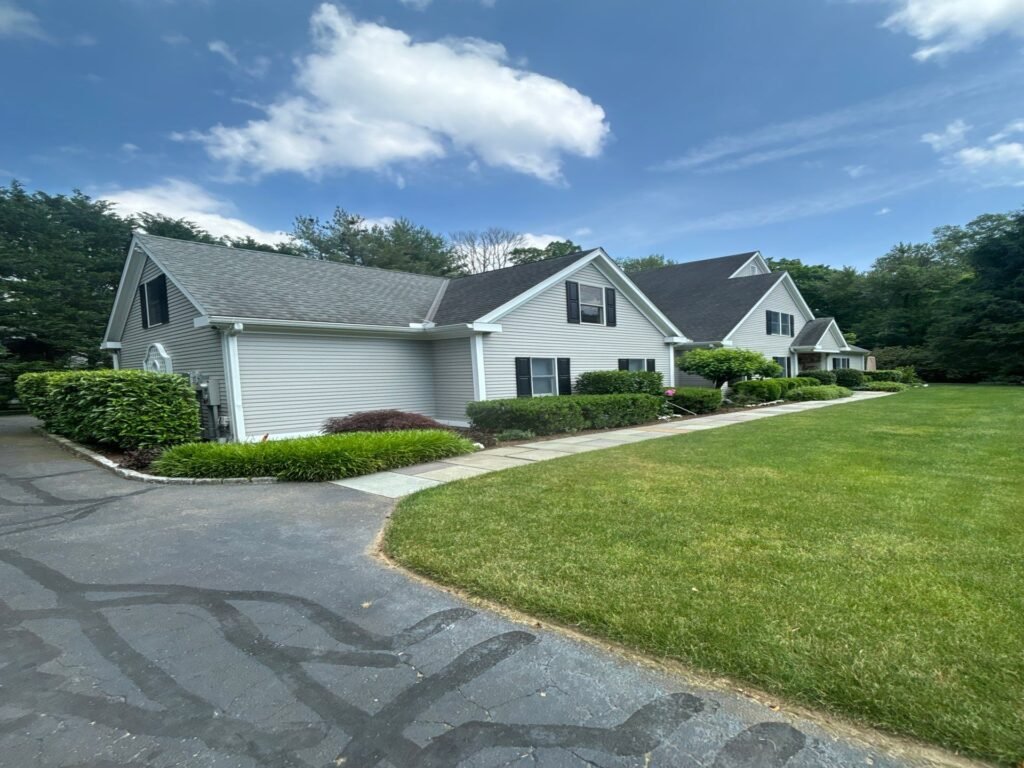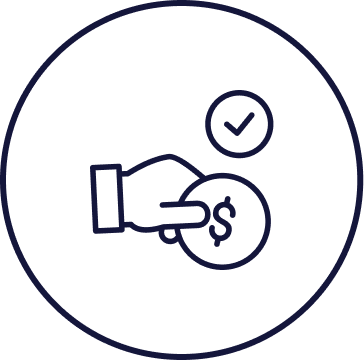Painting your home’s exterior is one of the most impactful ways to enhance its curb appeal, protect it from the elements, and increase its overall value. As a U.S. homeowner, understanding the factors that influence the cost of an exterior paint job in 2025 is essential for effective budgeting and securing a fair quote. Genesis Pro Painting breaks down the typical costs and considerations for your next exterior painting project.
Cost ranges per square foot ($1.50–$4.50)
In 2025, the average cost to professionally paint a home’s exterior in the U.S. generally ranges from $1.50 to $4.50 per square foot. This price typically includes both labor and materials.
- Average Home Sizes and Costs:
- Small Homes (800 – 1,000 sq. ft. of paintable area): $1,200 – $4,000
- Medium Homes (1,500 – 2,000 sq. ft. of paintable area): $2,250 – $8,000
- Large Homes (2,500 – 3,000+ sq. ft. of paintable area): $3,750 – $12,000+
It’s important to remember that these are averages, and your specific cost will depend on numerous variables outlined below.

Price variations by siding type (wood, vinyl, stucco, brick, metal)
The material of your home’s exterior significantly influences the cost due to differing preparation needs, paint types, and application complexities.
- Wood Siding: Costs typically range from $1.00 to $4.10 per square foot. Wood often requires more prep work like scraping, sanding, and potentially repairing rot or replacing damaged boards. It’s also more absorbent, potentially requiring more paint.
- Vinyl Siding: Generally costs $1.25 to $4.00 per square foot. Painting vinyl is often less labor-intensive for prep if it’s in good condition, requiring thorough cleaning and specialized acrylic latex paints that won’t cause warping.
- Stucco: Expect to pay between $1.50 and $4.70 per square foot. Stucco is porous and can require significant cleaning, patching of cracks, and potentially specialized elastomeric or masonry paints that offer flexibility and breathability.
- Brick: Costs range from $1.50 to $4.80 per square foot. Painting brick requires extensive cleaning, possibly mortar repair, and careful application of masonry-specific primers and paints to ensure proper adhesion and breathability.
- Metal (Aluminum/Steel): Generally ranges from $1.50 to $3.50 per square foot. Metal siding requires meticulous cleaning, often chalk removal (for aluminum), and a direct-to-metal (DTM) primer or specialized paint to ensure adhesion and rust prevention.
- Fiber Cement (e.g., HardiePlank): Typically costs between $1.20 and $3.20 per square foot. This material is very durable and holds paint well, often requiring less extensive prep than wood if it’s already primed.
Regional cost examples (e.g., Florida, Atlanta)
Labor rates and cost of living vary significantly across the U.S., impacting painting prices.
- Florida: Exterior painting costs in Florida can range from $2.00 to $4.50 per square foot. For a typical 1,500 sq. ft. home, homeowners might pay between $3,000 and $6,750. Factors like high humidity and strong sun exposure can influence paint choices and longevity, potentially leading to specific paint requirements.
- Atlanta, GA: In the greater Atlanta area, homeowners typically spend between $1.20 and $2.90 per square foot. For a medium-sized 2,000 sq. ft. home, estimated costs might range from $2,400 to $5,800. These ranges are often slightly lower than national averages due to differing market dynamics.
- Northeast U.S. (e.g., Boston, MA): Expect costs to be on the higher end, often between $2.30 and $4.60 per square foot, due to higher labor costs and demand.
- Midwest U.S. (e.g., South Bend, IN): May see slightly lower costs, around $2.10 to $4.10 per square foot.
Always get local quotes, as these examples provide a general idea but actual prices can fluctuate.
What affects price: Prep, number of coats, repairs, climb height
Beyond the type of siding and location, several critical factors influence your total exterior painting cost:
- Condition of Existing Surface / Prep Work: This is often the biggest cost driver. Extensive preparation can account for 60-75% of the total project cost. This includes:
- Power Washing: To clean dirt, grime, and mildew.
- Scraping & Sanding: Removing loose, peeling, or bubbling paint.
- Repair Work: Patching holes, repairing cracks, replacing rotted wood, or re-caulking seams.
- Priming: Essential for bare spots, stained areas, or when switching paint types.
- Number of Coats: Most professional jobs include two coats of paint for optimal durability, color depth, and coverage. Homes with dark existing colors or those switching to a much lighter color may require a third coat, increasing paint and labor costs.
- Repairs: Significant structural repairs, extensive wood rot, stucco patching, or carpentry work needed before painting will add to the overall price.
- Climb Height / Number of Stories: Multi-story homes or homes with complex architectural features (e.g., dormers, gables, intricate trim) require more time, specialized equipment (taller ladders, scaffolding, lifts), and increased safety measures, all of which drive up labor costs per square foot.
- Paint Quality: Choosing premium-grade exterior paints will increase material costs but offers superior durability, color retention, and longer lifespan, potentially saving you money in the long run by extending the time between repaints.
- Accessibility: Homes with challenging access points (steep inclines, dense landscaping, fences) may increase labor time and costs.
DIY vs. Pro costs & tips to get accurate quotes
Deciding between DIY and professional painting involves weighing costs, time, and quality.
- DIY Costs: Painting your home exterior yourself typically costs $750 to $2,500 for materials and equipment (paint, primer, brushes, rollers, sprayer rental, ladders/scaffolding, drop cloths, tape, safety gear).
- Pros: Significant upfront savings.
- Cons: Extremely time-consuming (can take weeks), physically demanding, potential for injury, lack of professional finish, risk of premature paint failure if prep or application is incorrect, no warranty.
- Professional Costs: As mentioned, typically $1.50 to $4.50+ per square foot.
- Pros: Expert preparation, high-quality, long-lasting finish, specialized equipment, efficiency, safety, often includes a warranty on workmanship, peace of mind.
- Cons: Higher upfront cost.
Tips to Get Accurate Quotes:
- Get Multiple Estimates: Obtain detailed, written quotes from at least three reputable painting contractors.
- Ensure Detail: Make sure each quote specifies:
- Square footage to be painted.
- All prep work included (power washing, scraping, sanding, caulking, minor repairs).
- Number of paint coats.
- Brand and type of paint and primer to be used (quality matters!).
- Exclusions (what’s not included).
- Warranty on labor and materials.
- Payment schedule.
- Check References & Reviews: Look for painters with strong local references, licensing, insurance, and positive online reviews.
- Discuss Expectations: Clearly communicate your vision, desired colors, and any concerns you have about the existing surface.
Budgeting for extras: Color changes, structural fixes
Beyond the core painting cost, always budget for potential “extras”:
- Significant Color Changes: Drastically changing from a dark color to a light one (or vice-versa) may require an additional coat of paint or a special tinted primer to ensure full coverage, adding to material and labor costs.
- Extensive Structural Fixes: While minor repairs are usually included in prep, major issues like replacing large sections of rotted siding, significant stucco repair, or extensive carpentry work will be an additional charge. Painters may even recommend a separate contractor for these larger structural fixes before they begin painting.
- Trim, Doors & Accents: Painting trim in a contrasting color, or adding specialized finishes to doors, shutters, or decorative elements, may be quoted separately or add to the overall square footage cost due to the detail work involved.
- Gutter Cleaning/Repair: Often recommended before painting, this may be an additional service.
- Landscaping Protection/Relocation: While painters will protect existing landscaping, if large bushes or trees need significant trimming or temporary relocation for access, this could be an extra charge.
- Permits: In rare cases, for extensive scaffolding or if your home is part of a historic district, a local permit might be required, incurring a small fee.
By understanding these cost factors and preparing wisely, U.S. homeowners can approach their exterior painting project with confidence, ensuring a beautiful and protected home for years to come.
Ready to transform your home’s exterior? Genesis Pro Painting provides transparent pricing, detailed quotes, and professional results that stand the test of time. Contact us today for a personalized consultation and a free, accurate estimate for your U.S. home’s exterior painting project!






